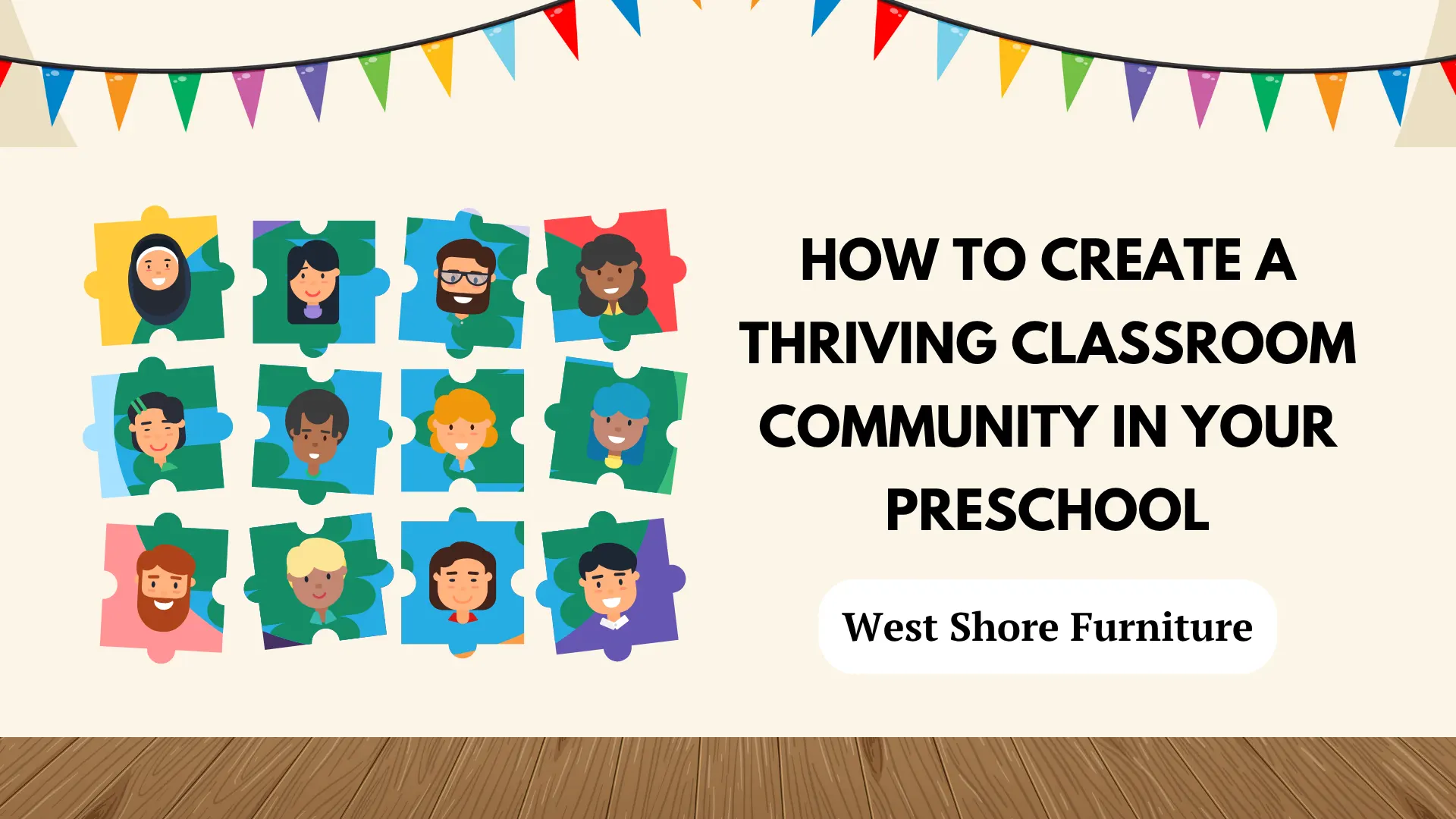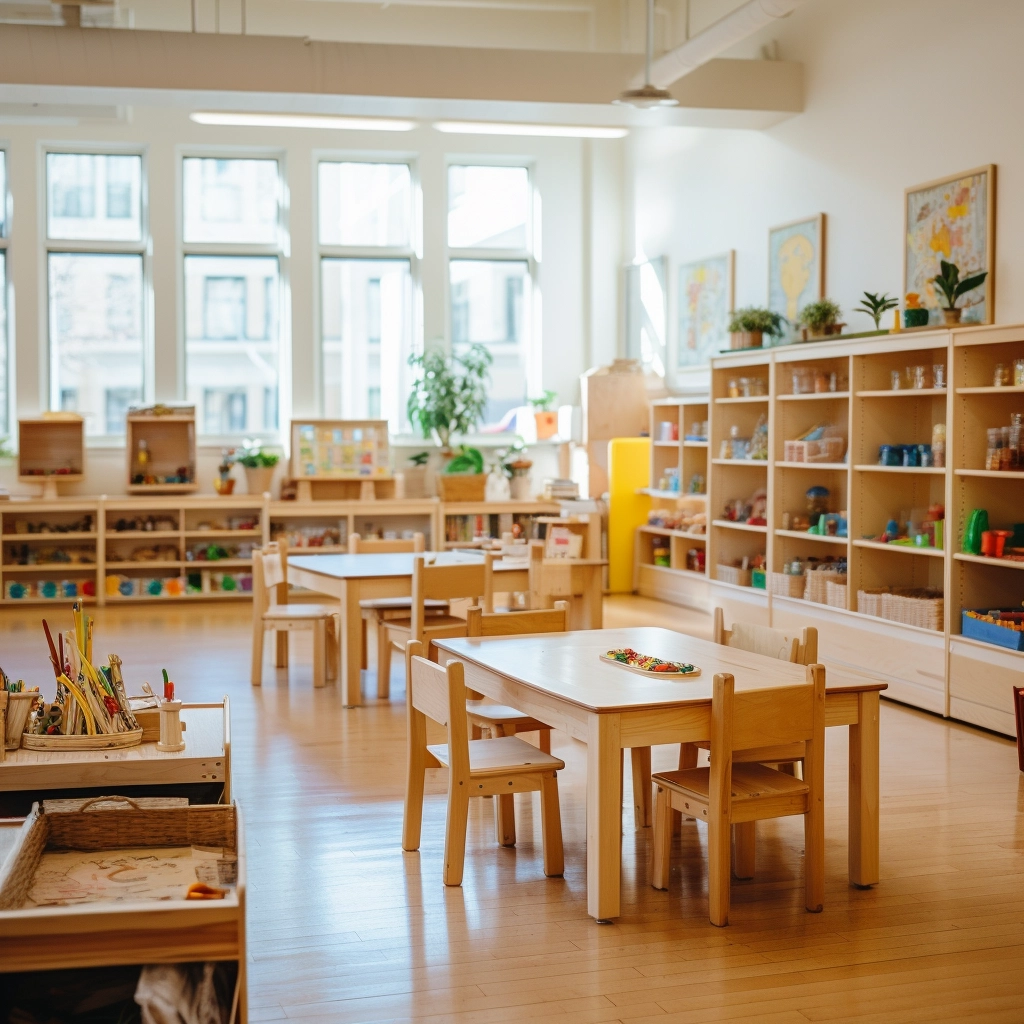Is your preschool classroom community helping every child feel they belong, feel safe, and want to participate? Do morning meetings, classroom jobs, and shared rules truly build belonging rather than just fill time? Are children steadily becoming partners who cooperate, practice self-regulation, and support one another?
Building a good classroom community puts children in a space where they feel empowered and engaged. That safety and agency evolve into a shared community culture where real social experiences and emotion regulation are practiced daily. Over time, these lived experiences consolidate into core SEL skills such as self-control, perspective-taking, and cooperation. With stronger self-regulation and peer support, children free up cognitive bandwidth to engage deeply with math concepts and early literacy. They listen longer, persevere through challenge, use richer language, and make meaning with greater confidence.
In the pages ahead, you will know why it matters in preschool, and how to launch and sustain it through clear routines, thoughtful environment design, family partnership, and simple ways to monitor progress.
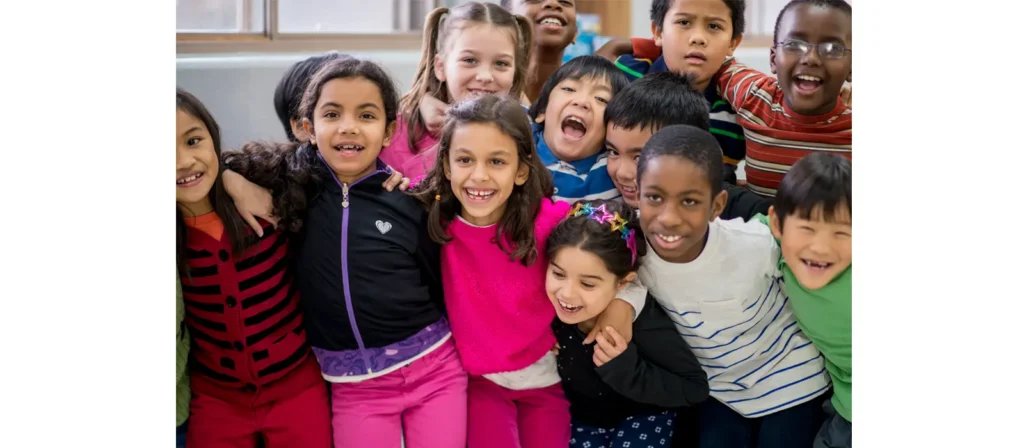
What is a classroom community?
A Classroom Community in preschool is not just about children sharing space. It is a living social structure built on relationships, routines, and shared experiences. It connects students, teachers, and families in a supportive and caring environment where everyone has a place and a role.
In this community, every child feels known and recognized as a valued member of the group. Simple rituals such as greeting each child by name in the morning or singing a song during cleanup help build rhythm and connection. These predictable moments provide structure to the day and foster a sense of belonging among young learners.
Why a Classroom Community Matters?
A strong Classroom Community supports children’s social, emotional, et cognitive development in powerful ways. When preschoolers feel safe and connected, their ability to learn expands naturally. They listen more attentively, persist through challenges, and show genuine curiosity about the world around them.
Emotionally, this sense of community helps children understand and regulate their feelings. Through group activities such as storytelling, art, or circle discussions, they learn empathy, patience, and cooperation. They begin to recognize that their actions influence others and discover that kindness and helpfulness make the group stronger.
Most importantly, an inclusive classroom community celebrates diversity. It embraces every child’s background, culture, and individuality. In classrooms where belonging is a priority, behavior issues decrease and relationships grow stronger. Instead of constant redirection, teachers guide from a place of trust.
How to Promote Classroom Community
Building community in the classroom is a gradual process that unfolds through daily actions, thoughtful routines, and intentional language. It is not created in a single day or through one activity. Instead, it grows as teachers and children develop habits that nurture trust, cooperation, and inclusion. In every preschool classroom, teachers play a central role in creating community in the classroom by shaping both the environment and the social-emotional experiences of the children.
1. Start with Daily Routines That Build Connection
Routines bring rhythm, predictability, and comfort to young children. Starting the day with a warm greeting, a classroom song, or morning circle time helps children enter the preschool classroom feeling welcomed and secure. These rituals become part of the shared identity of the group and help children see themselves as active members of a classroom community.
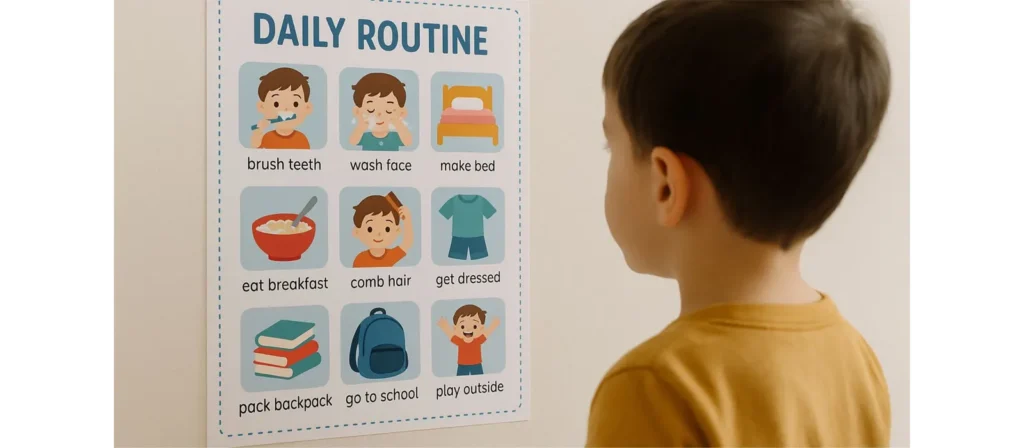
Throughout the day, transitions such as cleanup, snack, and lining up can become opportunities for teamwork. Assigning classroom responsibilities like “line leader” or “snack helper” gives children a sense of purpose and shared responsibility. These predictable routines naturally support creating community in the classroom by reinforcing cooperation and mutual respect.
2. Use Language That Encourages Belonging
The words teachers use shape the tone and culture of the preschool community. Statements like “Let’s work together to clean up” or “We take care of our classroom” reinforce a collective mindset. This kind of inclusive language teaches children that they are not just individuals, but members of a group that looks out for one another.
Acknowledging children’s efforts with specific and positive feedback also reinforces connection. Instead of simply saying “Good job,” teachers can highlight collaboration and kindness. Phrases such as “You helped your friend without being asked” or “You worked hard to take turns” send a clear message that these actions are part of what makes the classroom community strong.
3. Encourage Collaborative Learning and Play
Play is the heart of the preschool classroom, and it is one of the most effective ways of building community in the classroom. When children engage in play that requires shared space, materials, and ideas, they naturally practice communication, cooperation, and problem-solving. These experiences help develop the social bonds that are essential to a strong classroom community.
Teachers can foster collaboration by designing activities and learning centers that encourage teamwork rather than competition. Below are several types of play-based experiences that promote a sense of preschool community.
Group Building Activities
- Block towers and structures: Invite pairs or small groups to build something together, like a bridge or a city. This encourages negotiation, turn-taking, and combining ideas.
- Cooperative obstacle courses: Create indoor or outdoor challenges where children have to work together to move through stations (e.g., carrying an object together, following a path while holding hands).
- Parachute games: Children hold the edges of a large parachute and must move it together in coordinated ways — bouncing balls, creating waves, or lifting it together to switch places underneath. These games require teamwork and attention to group rhythm.
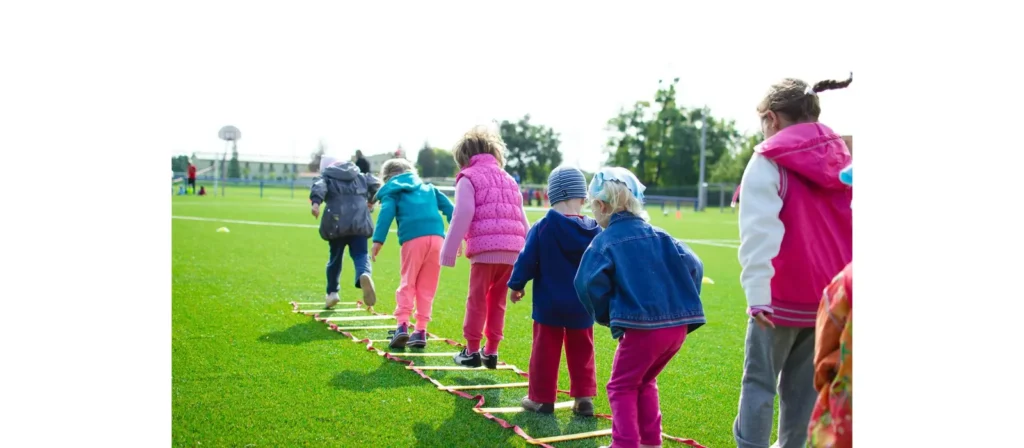
Partner and Group Art Projects
- Collaborative murals: Provide a large sheet of butcher paper and have small groups paint or draw a scene together, such as a garden, a neighborhood, or a zoo.
- Shared sculptures: Use clay, recycled materials, or playdough for children to build a single structure together, like a space station or a playground.
- Class collage or quilt: Assign each child a square or section to decorate that is then assembled into one large display. This project celebrates individuality and collective identity.
Cooperative Dramatic Play
- Role-play scenarios: Set up themed areas (grocery store, vet clinic, bakery, post office) that require shared roles and communication to act out daily life. Children take turns being customers, workers, or helpers.
- Puppet shows: Children work in pairs or small groups to tell stories with puppets. They practice dialogue, storytelling, and listening to one another’s ideas.
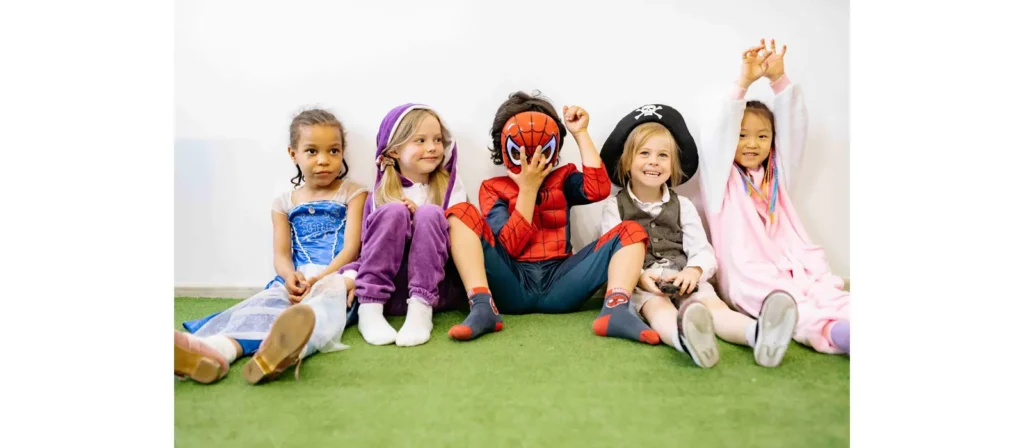
Music and Movement Games
- Freeze dance with a twist: Instead of freezing alone, children pair up when the music stops and do a partner pose like a high-five or a hug.
- Call-and-response songs: Songs that include repeated patterns or shared actions give children a collective voice and rhythm, building unity.
- Circle games like “Ring Around the Rosie” or “Duck, Duck, Goose”: These classic games build anticipation and excitement in a shared group setting.
Group Problem-Solving Activities
- Puzzle races: Children work in pairs to complete large floor puzzles together, discussing where pieces might go.
- Treasure hunts: Set up clues around the room or playground and ask children to find them in small teams, combining observational and collaborative skills.
- STEM challenges: Provide materials like cups, craft sticks, and tape, and ask small groups to build the tallest tower or a ramp for toy cars. These projects naturally invite cooperation and creativity.
During all of these activities, teachers play an essential role by observing, modeling, and gently guiding interactions. Prompts like “What’s your idea?”, “How can we do this together?” ou “Let’s make sure everyone gets a turn” help children reflect on how they are contributing to the group.
Through purposeful play, children learn more than just academic skills. They learn what it feels like to be heard, to be needed, and to be part of something bigger than themselves, which is the heart of any true classroom community.
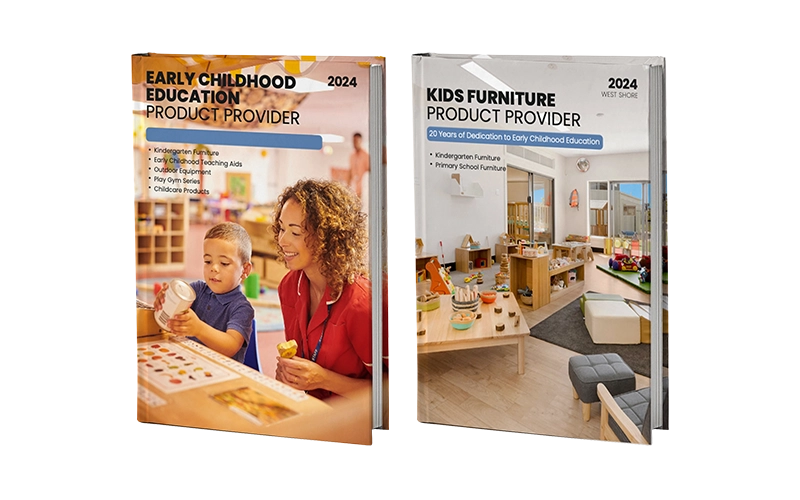
4. Model the Behavior You Want to See
Children learn how to behave in a community by watching the adults around them. In a nurturing classroom community, teachers model respectful communication, active listening, and emotional regulation. When a teacher calmly explains their feelings or patiently waits for a child to respond, they are showing what healthy social interaction looks like.
This modeling reinforces that community values are not just rules, but lived experiences. Children absorb these lessons and begin to mirror them with their peers. Through consistent adult example, creating community in the classroom becomes a lived, daily practice.
5. Celebrate Small Acts of Kindness
Acknowledging and celebrating kindness helps children see that their actions impact others in positive ways. Teachers can highlight kind behavior through classroom tools such as a “Kindness Jar,” a bulletin board that tracks helpful acts, or a group reflection at the end of the day.
These simple celebrations, whether verbal praise or group recognition, reinforce the idea that caring for one another is a central part of life in a preschool classroom. Over time, children begin to internalize these values and carry them into their daily choices.
6. Involve Families in the Community
A true preschool community includes not just children and teachers but families as well. Teachers can strengthen this sense of unity by inviting families to participate in classroom life. This might include contributing cultural stories, sharing photos from home, or attending special family events.
When children see their family members involved in the classroom, it deepens their sense of belonging. It also builds trust between school and home, reinforcing the idea that everyone is working together to support the child’s growth within a caring classroom community.
Creating community in the classroom is an intentional, ongoing process. It is found in the routines that shape the day, the language that builds trust, the activities that invite cooperation, and the relationships that support each child’s sense of belonging. Every action teachers take can help children experience the joy and strength of being part of a truly connected preschool community.
Environment Design That Promotes Belonging
The physical layout and atmosphere of a preschool classroom play a major role in shaping the emotional climate of a classroom community. A well-designed space quietly supports the daily work of building community in the classroom, helping young children feel safe, seen, and supported. When every corner of the room reflects care and intention, the environment becomes a silent partner in creating community in the classroom.
Design for Belonging
In a strong preschool community, every child should feel like the classroom is made for them. Displaying children’s names, photos, and artwork on the walls shows that each child belongs. Personalizing cubbies, job charts, and daily routines reinforces the idea that everyone has a place and purpose. When children see themselves represented in their surroundings, it affirms their identity as valued members of the group.
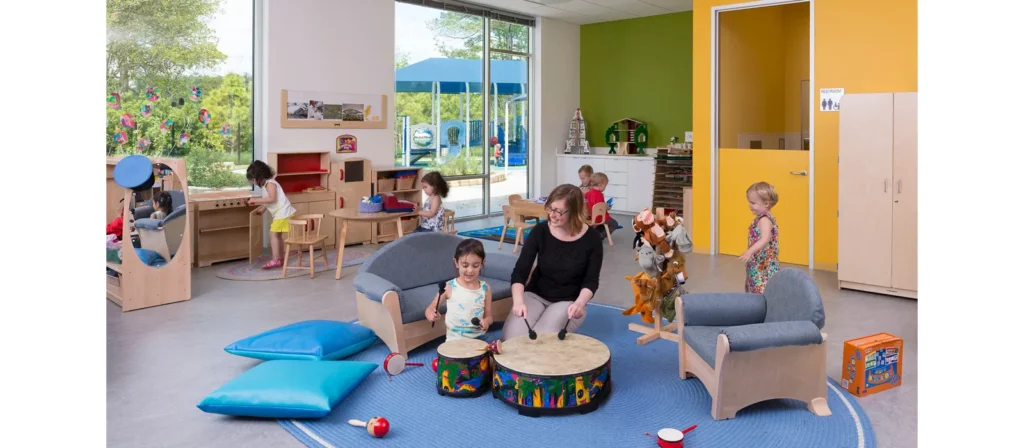
Encourage Interaction Through Layout
How furniture and materials are arranged can influence how children interact. In a preschool classroom that values collaboration, spaces are set up to promote communication and teamwork. Tables positioned for small groups, cozy reading nooks with enough room for a friend, and dramatic play areas with shared props all invite children to engage with one another. These design choices support creating community in the classroom by encouraging natural moments of connection.
Incorporate Meaningful Cultural Touches
A truly inclusive preschool community reflects the cultures, languages, and stories of all its members. Teachers can decorate the space with multilingual signs, culturally diverse books, and family photos. These choices let children know that their backgrounds are respected and celebrated. It shows that the community includes everyone, not just in name but in presence.
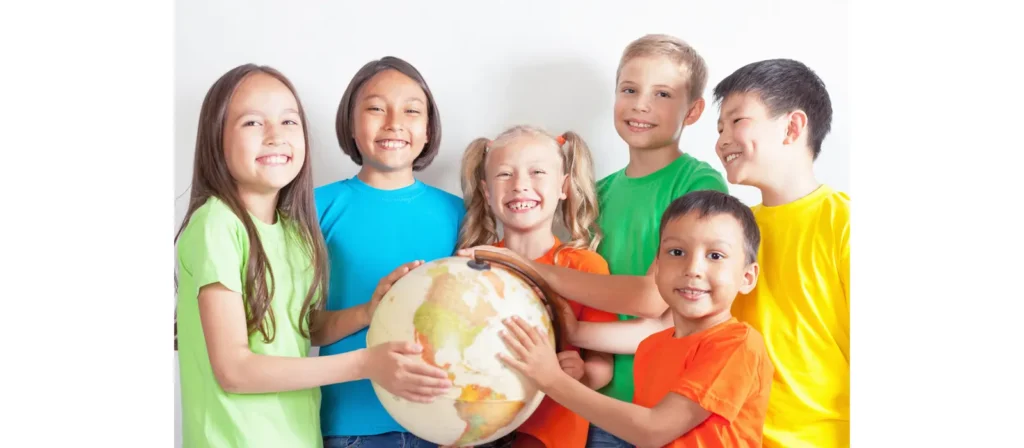
Create Spaces for Quiet and Connection
Children need options for different kinds of engagement. While group areas support play and collaboration, quiet spaces invite reflection and one-on-one connection. A soft corner with cushions, calming books, or sensory items allows children to reset when needed. These peaceful areas support emotional regulation and strengthen the relational fabric of the classroom.
Designing the physical space of a preschool classroom is not just about organization. It is about intention. When the environment reflects the values of inclusion, independence, and cooperation, it naturally supports the goal of building community in the classroom. Through thoughtful design, teachers can create a place where every child feels that they belong, contribute, and grow together within a meaningful classroom community.
Conclusion
A strong classroom community is not built in a day. It is cultivated through relationships, routines, and shared experiences that help every child feel known, respected, and included. In the early years of life, children are just beginning to understand who they are and how they fit into the world around them. The preschool classroom becomes their first space outside the home where they begin to learn what it means to belong.
Through intentional teaching, a warm environment, and purposeful play, educators take the lead in creating community in the classroom. They guide children as they practice kindness, resolve conflicts, and celebrate one another’s differences. These daily interactions are the building blocks of empathy and cooperation. They are values that extend far beyond the classroom walls.
When teachers, families, and children work together to build a connected preschool community, the results are lasting. Children develop confidence, friendships, and a foundation for lifelong learning.

